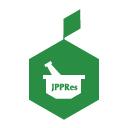Article,
Neuropharmacological effects of the aqueous leaf extract and fractions of Pavetta crassipes (K. Schum) Rubiaceae in mice
Journal of Pharmacy & Pharmacognosy Research, 5 (5): 278-287 (September 2017)
Abstract
Context: In Northern Nigeria, Pavetta crassipes (K. Schum) Rubiaceae leaf extracts are used in the treatment of convulsion, pain and mental illness; however, there is paucity of information on its neuropharmacological effects.
Aims: To evaluate the neuropharmacological effects of the aqueous leaf extract and fractions of Pavetta crassipes.
Methods: Pavetta crassipes leaves were harvested, dried and powdered using an electric mill. Hot aqueous extraction was done with 250 g powdered leaf in 1000 mL distilled water. The dry extract was partitioned in various solvents with only the aqueous fraction (AF), and butanol fraction (BF) giving significant yields. Neuropharmacological effects including anticonvulsant, behavioural, antipsychotic, muscle relaxant and sedative effects were evaluated in the extract and fractions at doses of 100, 200 and 400 mg/kg, using standard methods.
Results: The onset of strychnine induced convulsions was significantly (p<0.01) delayed by doses of AE and BF. Pentylenetetrazol induced convulsions were significantly (p<0.01) delayed by doses of AF and BF while AE at 400 mg/kg offered 100% protection. The duration of maximum electroshock induced tonic hind limb extension was reduced significantly (p<0.01) by AE, AF and BF. There were also significant reductions in motor coordination (p<0.01), rearing (p<0.05), locomotor activity (p<0.01), grooming (p<0.01), time of sleep onset (p<0.01), and an increase in sleeping time (p<0.01) by doses of AE, AF and BF.
Conclusions: The extract and fractions of P. crassipes possess anxiolytic, sedative, anticonvulsant, antipsychotic and muscle relaxant effects to varying degrees.
